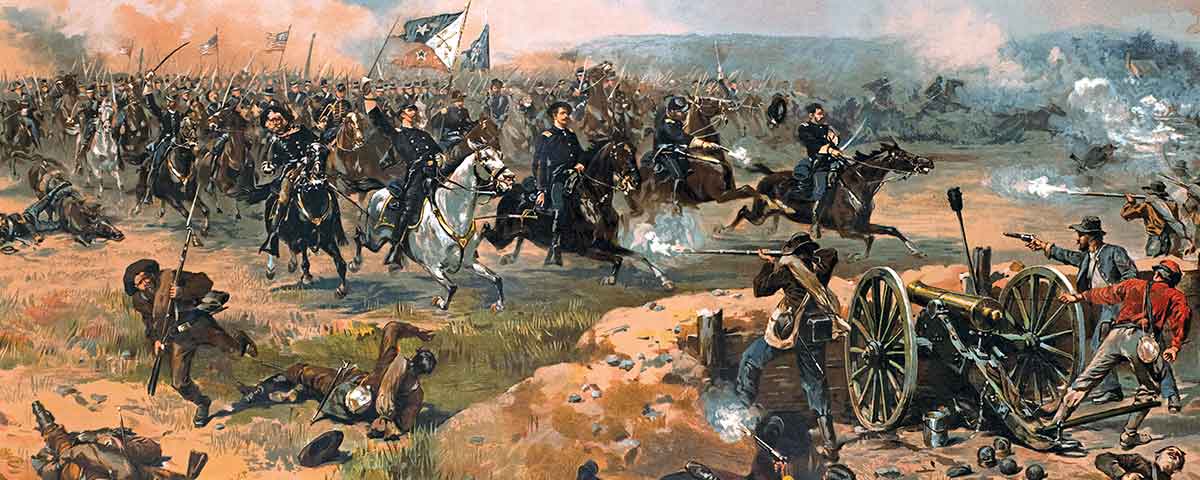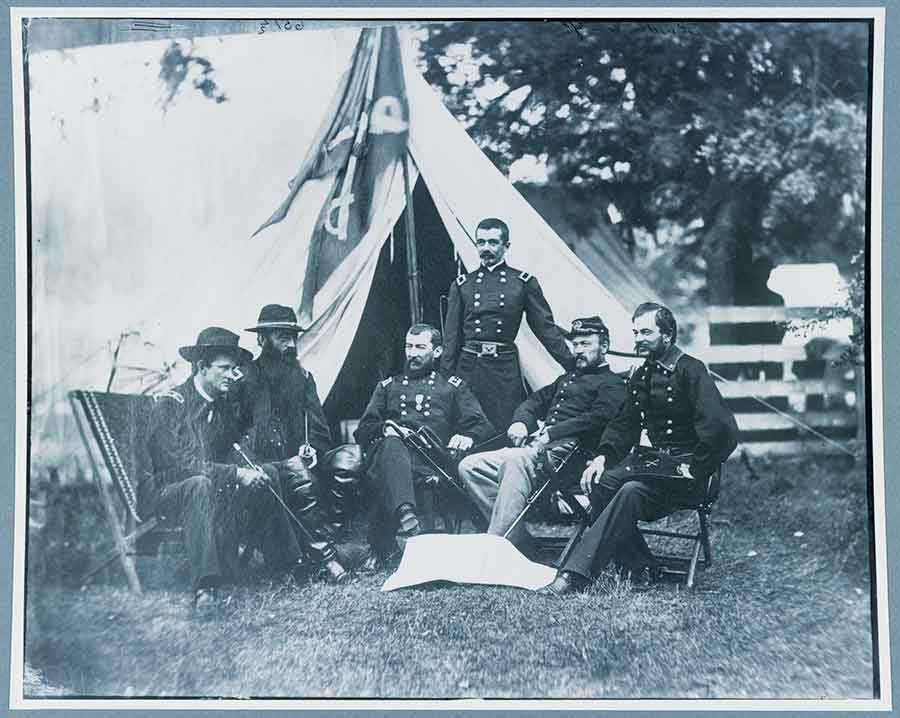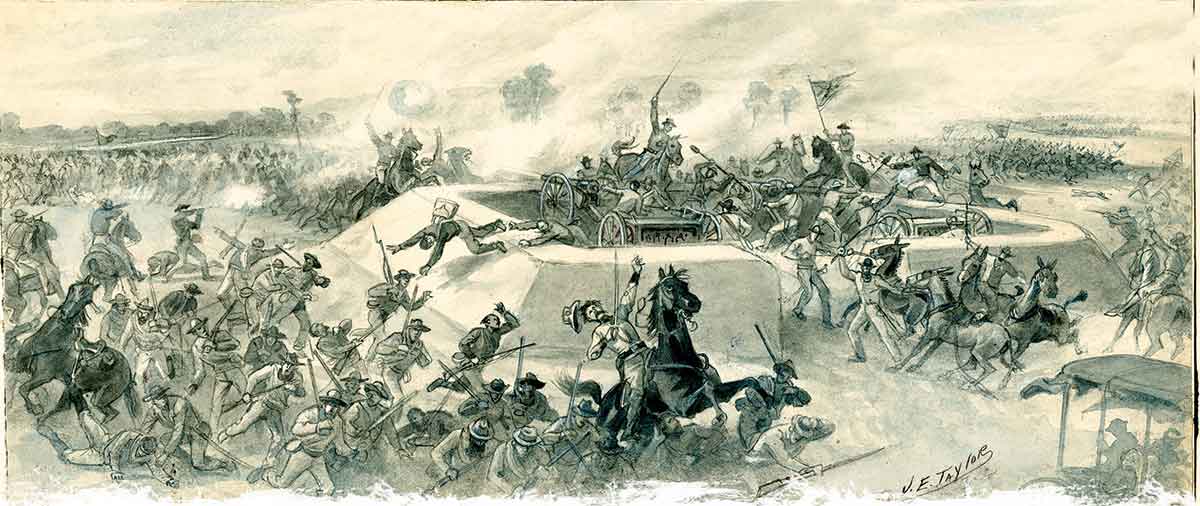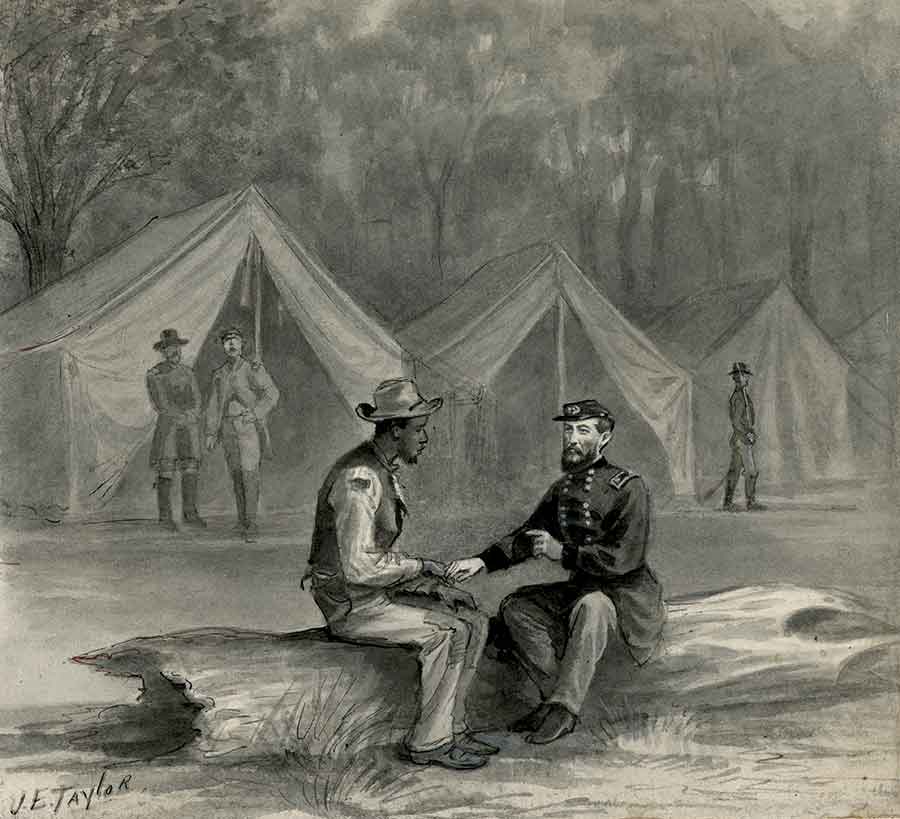[dropcap]A[/dropcap]s Harriett Griffith strolled around the Stine Farm on Winchester’s northern outskirts in the summer of 1861, the sight of an earthwork fortification under construction awed her. While troops labored on Fort Collier, named in honor of the Confederate lieutenant who supervised its construction, Griffith investigated every nook with her father and brother. “I have this day visited the breastworks or fortifications out on the Martinsburg Pike… Was exceedingly interested. First work of the kind I’d ever seen,” Griffith penned excitedly in her journal on August 21. She continued: “It seems real strong and well built….They have completely surrounded Stine’s House.” Near the end of her lengthy diary entry Griffith’s excitement about the visit transformed into a reflection about Fort Collier’s ultimate purpose. Confronted with the reality that this earthwork fortification could at some point be attacked, that men could be killed and the families of those slain left to deal with war’s tragic consequences, Griffith wrote wishfully: “Surely it is something to be remembered, but I hope it will never be used.”
Throughout the conflict’s first three years it seemed that Griffith’s hope might be fulfilled. In a community that had already endured two battles, numerous skirmishes, and incessant occupations during that period, Fort Collier was never the scene of any major action. Troops camped in and around it at various points and Confederates from Maj. Gen. Stephen D. Ramseur’s Division sought its protection on July 20, 1864, after defeat at the Battle of Rutherford’s Farm, but it had up to that point avoided being the scene of any significant combat. By the war’s fourth summer it seemed that Griffith’s hope that Fort Collier would “never be used” might be realized.
But the naïve wish of the young Valley resident ended on the afternoon of September 19, 1864, as the Stine Farm—and environs to its east and west—became part of one of the most dramatic scenes to ever unfold on any of the Shenandoah Valley’s battlefields when the largest cavalry charge of the war swept down the Martinsburg, or Valley, Pike and over the walls of Fort Collier. The charge not only changed the tenor of the Third Battle of Winchester and secured a major victory for the North, it also inspired great postwar works of art, as veteran troopers and infantrymen waged new battles over the memory of the engagement.
[quote style=”boxed” float=”right”]Sheridan saw an opportunity to use his cavalry in a grand charge[/quote]
On that bloody September day, while infantry from Maj. Gen. Philip Sheridan’s Army of the Shenandoah battled against Lt. Gen. Jubal Early’s Confederates east of Winchester along the Berryville Pike, over the Dinkle Farm, Hackwood Farm, and the bloody Middle Field in the Third Battle of Winchester’s opening stages, two of Sheridan’s cavalry divisions—Brig. Gen. Wesley Merritt’s and Brig. Gen. William Averell’s—tried to secure various crossings on the Opequon Creek north of Winchester, Merritt in Frederick County and Averell in Berkeley. Throughout the morning, Federal cavalry confronted varying levels of resistance from Confederates under Maj. Gen. John C. Breckinridge’s command and elements of Maj. Gen. Lunsford Lomax’s cavalry division. That morning, as Confederates defended the Opequon crossings, Early ordered Breckinridge to pull his command closer to Winchester. When Breckinridge failed to appear by about noon, Early sent Lt. Col. Alexander “Sandie” Pendleton to find him and immediately pull Breckinridge’s troops closer to the city.
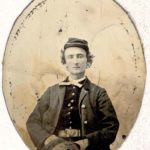
When Pendleton found Breckinridge and relayed Early’s order, Breckinridge initially expressed his reluctance to obey. He believed that a complete withdrawal would only encourage the Union cavalry to be more aggressive. Although Pendleton may have sympathized with the Kentuckian, the order had to be obeyed immediately as Early needed Breckinridge to bolster the army’s weak right flank. Early desperately wanted Breckinridge’s regiments to move “toward the right, where our forces were weakest and the enemy was making demonstrations in force.” Time was of the essence not only to aid in supporting Early’s right flank, but to prevent Breckinridge from being cut off by Averell’s cavalry, which was thundering south toward Winchester along the Martinsburg Pike.
While moving Breckinridge might, in Early’s estimation, have solved the dilemma on his right flank, “Old Jube” still understood the importance of checking Averell’s and Merritt’s divisions north of Winchester. Early turned to the chief of his cavalry corps, Maj. Gen. Fitzhugh Lee, and told him “to take charge of all the cavalry” north of Winchester and “check the enemy’s cavalry.” Now, on the ground where the Second Battle of Winchester ended in 1863 and where Ramseur met defeat at Rutherford’s Farm, Fitzhugh Lee, with support from Colonel George S. Patton’s brigade, had to do the unimaginable.
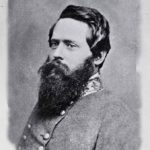
As Lee formed his four cavalry brigades, about 2,000 troopers, north of Winchester “across the Martinsburg… Pike” and “concealed by an open pine forest,” Lee plainly understood that success was unlikely. Although the Confederate horsemen might have appeared somewhat protected in the pine forest, the trees were so widely separated that they offered virtually no impediment to an attacking force. One Union cavalry officer who spied Lee moving into position noted that, “the forests were so open as to offer little or no hindrance to a charging column.” Lee knew the ground invited a cavalry charge. “The pending disaster,” Lee explained, “was from the very open nature of the country clearly perceptible,” and he searched for a way to counter such an attack.
That afternoon, as Lee observed Merritt’s and Averell’s cavalry brigades, he simultaneously felt awe and fear. With retreat not an option and staying put undesirable, Lee believed that his only alternative was to attack the Federal cavalry to shock the Union horsemen and cause disarray. Some of the Federals he attacked, however, were not surprised. Brig. Gen. George Armstrong Custer, who commanded a brigade in Merritt’s division, believed Lee did precisely the right thing. “The enemy wisely chose not to receive our attack at a halt, but advanced from the wood and charged our line of skirmishers.”
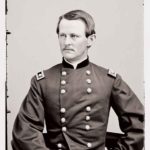
Lieutenant Colonel Caspar Crowninshield of the 2nd Massachusetts Cavalry recalled that as Lee’s regiments galloped toward Merritt’s and Averell’s skirmishers, “the whole line of the enemy’s cavalry was just in front of us… Soon the Rebel Cavalry charged and drove back our skirmishers on the right and left of the road [Martinsburg Pike].” Custer admitted “our skirmishers were forced back…a short but closely contested struggle ensued.” It mattered nil, however, as the Union cavalry regrouped, repulsed Lee’s advance and ultimately compelled him to pull his command closer to Winchester. As Lee’s regiments withdrew south toward Winchester, Early’s entire force contracted to Winchester’s eastern and northern edges. Confederate artillerist Milton Humphreys wrote of Early’s final defensive position, which assumed the shape of an inverted L: “Our army was now two sides of a rectangle of artillery, with the main body of infantry scattered over the space within the angle… there was nothing but cavalry and very little artillery placed across the Martinsburg road to protect our left.”
With Early’s army hugging that thin line near Winchester’s boundaries Sheridan saw an opportunity to use his cavalry in a grand, traditional charge, something that had never occurred before in the conflict. “The ground… was open, and offered an opportunity such as seldom had been presented during the war for a mounted attack,” Sheridan observed. Although Sheridan believed the flat, open terrain north of Winchester and the broken condition of Early’s army invited a massive cavalry assault, Averell did not concur. Averell’s men had been in the saddle for already 15 hours that day, fighting and chasing Confederates from Berkeley County, W.Va., south to Winchester. Through one of his aides Averell explained to Sheridan that his division “had been chasing the rebels in from Martinsburg and Bunker Hill… [our] horses couldn’t move faster than a walk.”
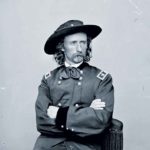
Sheridan cared little for that complaint, however, and ordered the attack. “Tell… [Averell] to charge,” Sheridan snapped, “I don’t care…for horse flesh today.” Additionally, Averell believed that Maj. Gen. George Crook’s corps had already secured victory with its attack, therefore making the cavalry assault needless. “It became at once visible,” Averell wrote, “to both armies that we had gained the day.” Averell, who wrote his report of Winchester after Sheridan removed him from command following the Union victory at Fisher’s Hill several days later, harbored significant animosity against “Little Phil” and used the report to try and diminish Sheridan’s reputation, which rose significantly in Winchester’s wake. An irate Averell believed that “the broken ground, intersected by deep ditches and high embankments… gave the enemy a chance to save his left flank. Opposed by stubborn infantry and well-handled artillery our cavalry on such ground could make but slow progress.”
If Wesley Merritt harbored similar concerns he didn’t share them with Sheridan. At about 3 p.m., as Merritt peered across the open ground to his front and gazed at the Confederate line facing north, he too believed the setting perfect for a massed cavalry charge. “At this time (3 p.m.) the field was open for cavalry operations such as the war has not seen,” Merritt wrote, “such as all good cavalry officers long to engage in.”
As Averell’s and Merritt’s cavalrymen readied themselves for this hammer blow, some troopers reflected on the joy they felt that for the first time in the conflict, cavalry was being used for its proper purpose. Colonel James H. Kidd was ecstatic that he would be involved in “the first… proper use of this arm…in a great battle.” Other troopers, too, were impressed with the advance’s martial air. The scene of regimental bands playing, flags flapping in the breeze, and sabers glistening in the late afternoon sun inspired Custer.
Gazing at the line of troopers Kidd estimated extended “more than half a mile from Averell’s right to Merritt’s left” Custer wrote, “This… furnished one of the most inspiring as well as imposing scenes of martial grandeur ever witnessed on a battlefield. No encouragement was needed to inspirit either man or horse.”
As the cavalry advanced one could not clearly discern where one regiment or brigade ended and another began. In Custer’s estimation the men were “so closely connected that a separate account of the operations of a single brigade or regiment is almost impossible.” Although moving as one mass, each brigade had a particular point of the Confederate line facing north to assault. While Averell’s two brigades aimed at Confederate positions west of the Martinsburg Pike, Merritt’s brigades focused on points in the Confederate line on or to the east of that important transportation route.
[quote style=”boxed” float=”left”]The sabers glistening in the late afternoon sun inspired Custer[/quote]
For three years Fort Collier had stood silently on the eastern edge of the Martinsburg Pike. Now on the afternoon of September 19, 1864, Fitzhugh Lee’s command, elements of Breckinridge’s infantry, and Captain George Chapman’s artillery sought its protection as Union cavalry descended “like a besom of destruction” from the north. As troopers from Colonel Charles Russell Lowell’s brigade advanced toward Fort Collier the fire from Chapman’s artillery initially stymied them. “A withering fire staggered the head of his column,” Merritt remembered. Soon, however, the 3rd U.S. Artillery unleashed a furious barrage—one that wounded both Lee and Chapman (Chapman’s wound proved mortal). Now, Lowell’s brigade, as Merritt explained, “dashed down, broke through the enemy’s lines, and swept it away in confusion…it was a noble work well done.”
Once the Confederate line began to crack under the weight of the assault some Confederates fled as fast as possible from the field, while others determined to stay and fight regardless of how desperate the situation. Merritt observed: “Many of them threw down their arms and cried for mercy; others hung tenaciously to their muskets, using them with their muzzles against our soldiers’ breasts.” Merritt even observed some Confederates taking “refuge in a house” and shooting “through the doors and windows.” Whether or not this was Stine’s home located in Fort Collier’s interior is unknown.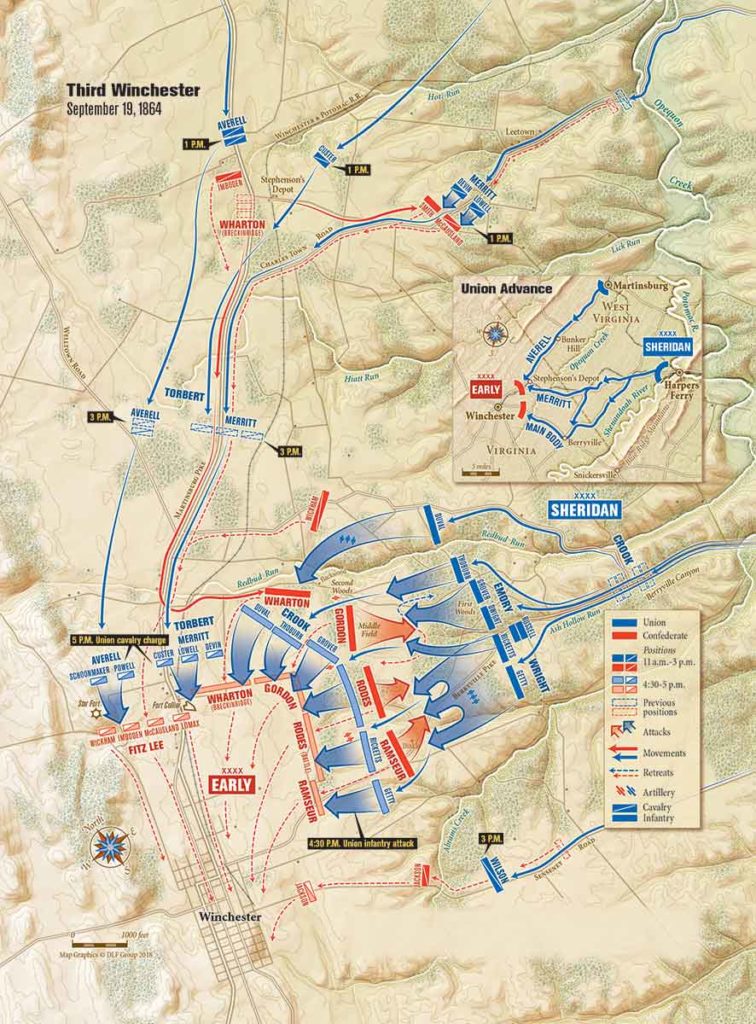
Two days after the battle a correspondent for the New York Daily Herald recognized that the cavalry assault proved the battle’s significant moment. “Above the roar of artillery, musketry and cheers, and the fierce yells of the contending armies,” the Herald observed, “could be distinctly heard the shrill notes of the cavalry bugle, sounding the charge which was the death knell of Early’s army.” Put simply, the Herald unequivocally concluded that the cavalry assault “secured us the victory.”
But not all the Federal veterans of Winchester agreed. William Haroff, a private in the 126th Ohio Infantry, part of Maj. Gen. Horatio G. Wright’s Sixth Corps, may have thought the three infantry corps that fought with Sheridan were overlooked when he penned a postwar poem simply titled, The Battle of Winchester, September 19th, 1864, which ignored the cavalry’s critical role. The poem, published weeks after the battle, heaped all credit for Sheridan’s victory on Crook’s, Wright’s, and William Emory’s corps. “We charged the Rebs’ position and nobly won the day/Crook’s boys, with Wright’s and Emory’s, were also in the fray.” Fifty-one years after the battle Thomas H. M’Cann a veteran of the 90th New York, part of Emory’s Nineteenth corps, simply excluded the cavalry’s important role in a chapter he penned about Sheridan’s 1864 Shenandoah Campaign in his The Campaigns of the Civil War. In describing the final advance at Winchester, M’Cann wrote that “at 4 p.m. the final attack was made… the 6th and 19th Corps rushed… and in a short time Early saw his whole left wing giving away in disorder—thus the battle was won for the Blues.”
Not all infantry veterans sought to minimize the cavalry’s role during the battle. The 8th Vermont Infantry’s George Carpenter was among those who was amazed at the scene of five brigades of Union cavalry charging. “In solid columns,” Carpenter penned in the regimental history published in 1886, “with drawn sabers flashing in the sun… [the] troopers… burst at a gallop upon the surprised enemy. It was like a thunder-clap out of a clear sky, and the bolt struck home.”
Merritt’s and Averell’s veterans seemed to monitor much of what was published about the fight. Whenever an infantry veteran failed to properly credit the cavalry, the former horse soldiers possessed no qualms about using articles in The National Tribune, like “A Blast From a Cavalryman’s Bugle,” to note that excluding cavalry from any discussion of the Third Battle of Winchester, or any of Sheridan’s victories in the Valley for that matter, was “like giving the play of Hamlet, with the character of Hamlet left out.”
[quote style=”boxed” float=”left”]Children’s textbooks used the cavalry attack as an exemplar of courage[/quote]
Although some of Sheridan’s veterans might have downplayed or ignored the significant role cavalry played in the battle, Merritt’s and Averell’s troopers had little to fear as their late afternoon assault emerged as one the 1864 Shenandoah Valley Campaign’s two most iconic moments—Sheridan’s ride at Cedar Creek being the other. Children’s textbooks and popular histories of the conflict penned in the half-century after the war used the cavalry attack at Winchester as an exemplar of courage and patriotism. Authors such as Charles Carleton Coffin, a correspondent whose wartime musings offer great insight into the Army of the Potomac’s campaigns, wrote of the charge in his Freedom Triumphant published in 1890, “thousands of horsemen were now riding across the fields….The sun, descending the western sky, glints from the gleaming sabres of the cavalrymen. The earth trembles beneath the hoofs of the horses… the Union cavalry was in good condition.” Five years earlier, poet Henry Horton mused in his “Sheridan’s Battles in the Shenandoah” that the “Cavalry… with movements deft/And swift and strong, smote Early’s dazed men so/That they recoiled dismayed beneath the blow.”
The cavalry assault’s romanticism proved too strong to resist for the chromolithograph publishing firm of Louis Prang & Co. In the mid-1880s Prang published a series of 18 images depicting battles scenes. Six portrayed naval actions, six illustrated battles in the Western Theater, and the remainder provided snapshots of significant moments in the east. Among the six scenes chosen to represent the war in the east was “Sheridan’s Final Charge at Winchester” painted by Swedish-born Thur de Thulstrup. Captain Theodore F. Rodenbough, wounded in the assault and depicted in the painting astride a brown horse next to Lowell mounted on a white steed, believed it an excellent depiction. “I heartily congratulate you upon the fidelity with which you have reproduced the scene as I remember it,” Rodenbough wrote in a letter to Thulstrup after the painting’s release in 1886. He continued in admiration, “you have attained an exceptional degree of realism in the composition of your picture.”
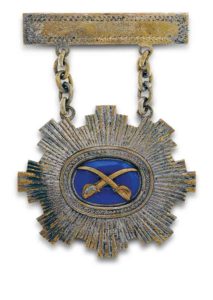
Even Sheridan, who cared little for Thulstrup’s depiction of his famed Cedar Creek ride released the same year, admired the depiction of the cavalry assault. Amid all of the items proudly displayed in Sheridan’s office in the War Department was Thulstrup’s portrayal of the charge. A journalist who visited Sheridan in Washington, D.C., in the spring of 1888 noted the painting seemed to hold prominence among all of the “large cases filled with curious pottery, Indian blankets, bows, arrows, clubs and other things” as Sheridan displayed Thulstrup’s work on “a small easel just beyond… [his] desk.”
Twenty-four years later, Thulstrup completed another depiction of the cavalry assault for the Soldiers and Sailors Memorial Hall in Pittsburgh, Pa. The painting, which a correspondent for the Pittsburgh Post-Gazette described as “a decorative canvas of unusual power and beauty,” focused on “Col. James N. Schoonmaker leading a cavalry charge against ‘Star’ Fort.”
The cavalry charge also took center stage in a 1913 film adaptation of Bronson Howard’s play The Greater Shenandoah, which first hit the stage three years after Thulstrup’s initial painting. Advertisements for the film, which ran about 30 minutes, touted as one of its main features “the awe-inspiring Battle of Winchester with charging cavalry.”
While at times Merritt’s and Lowell’s veterans might have felt their efforts at Winchester slighted, authors, artists, and playwrights solidified it as one of the conflict’s most iconic moments. In the end then Wesley Merritt’s official report of the battle proved not only informative, but prophetic when he wrote that the assault was indeed “a theme for the poet” and a “scene for the painter.”
Jonathan A. Noyalas is director of Shenandoah University’s McCormick Civil War Institute. Prof. Noyalas, author or editor of 11 books, is also editor of Journal of the Shenandoah Valley During the Civil War Era.
A Quiet Man: Tom Laws risked his life for the United States, But we still don’t know much about him
By William H. Austin
[dropcap]T[/dropcap]om Laws, a black man living near Winchester, is both a familiar and unknown part of the Third Battle of Winchester story. It’s common knowledge that Maj. Gen. Philip Sheridan used Laws, who had a pass from the Confederates to enter Winchester and sell vegetables, to carry messages in and out of town to Rebecca Wright, a Quaker schoolteacher who provided Sheridan with important information about Lt. Gen. Jubal Early’s army. Much is known about Wright, but until recently, little was known about Laws.
Thanks to painstaking research in primary records done at Cedar Creek and Belle Grove National Park, a patchwork of information has emerged to help us better understand the Tom Laws puzzle. Laws himself provided clues to his background in a letter dated September 26, 1894, to illustrator James E. Taylor of Leslie’s Illustrated Newspaper fame, who drew the sketch at right. In that letter, Laws identified his prewar owner as Richard E. Byrd, and Phillip Burwell as the owner of his wife, Mary:
Mr. Taylor, Dear Sir:
…I was borned and raised in Clarke County, Virginia, and was owned by Richard Bird [Byrd]. My age is between 75 and 80 years, I married a woman belonging to Old Mr. Philip Burrill [Burwell]. She and I were sitting on the steps one Sunday evening. Two unknown men came through the yard and struck up a conversation with me about Winchester. I told them I could go to Winchester any time I chooses as my master lived there, that was, in Berryville, Sunday night, Sept. 11, and on Monday night these same two came back to my house and said to me, “The general wants to see you tonight.”
I got ready and started right off with them to the headquarters. They carried me to the general. When I got there, the general and I took our seat on an old log that was laying by the camp, and he asked me could I go to Winchester tomorrow, and I told him I could go there anytime the Rebels were there for my master lived there, and then the general asked me, did I know Miss Rebecca Wright. I told him I did not but I had a great many acquaintances in Winchester, I could find out. So I went to a lady, which was raised in the yard with my wife which I married, Matilda Robinson, telling her my errand. She quickly pointed me [to] the house. I went to the front door and knocked and Mrs. Wright came to the door and I asked, “Could I see Miss Rebecca Wright” and she called her to the door. I asked Miss Rebecca, “Could I see her privately.” She went into the school room in which she was teachin. I asked her, “Was she a Union lady,” she said she was. I asked her then, “did she know the general?” She said she did not and when she said she did not, I thought I was between Heaven and Earth. I ventured anyhow and gave her the letter which was sent to her and in the afternoon I called and got her reply and gave it to the scouts that night.
Archival records indicate Thomas Laws was born a slave in Virginia on January 7, 1817, and was the property of Captain Thomas T. Byrd. Captain Byrd died in 1821, and his estate passed to his wife Mary. After Mary Byrd died, her March 6, 1824, will mentions that her slave, Nancy, had a son named “Thomas.” Slave Nancy and her three children also appear on Mary’s January 2, 1826 estate inventory.
Typically, slaves remained estate property until the estate formally closed—even those bequeathed freedom or distribution to a heir. The Byrds’ son, Richard E. Byrd, mentioned in Laws’ 1894 letter, handled the estate, and an 1835 account lists fees paid for the hiring out of slaves, including Laws, who brought in $5 for his services. He would have been about 12.
Oddly, by 1840 Laws was listed on Clarke County’s tax lists as a free black, but he never appeared on any subsequent prewar personal property tax rolls. If he had been briefly freed, no deed or certificate of emancipation was found, meaning he likely returned to slave status in the Byrd family.
Thomas T. Byrd Jr. was a brother of Richard E. Byrd, and Clarke County personal property tax records show one slave over age 16 on Thomas Jr.’s property in 1842 and again in 1850. It is possible that slave could have been Laws at about ages 25 and 33 respectively. County tax rolls from 1854 through 1856 also show that Richard E. Byrd owned one slave. Perhaps Laws?
Slave marriage records for Tom and Mary Laws don’t exist, but their first-born son, Charles, arrived about 1850 or 1851. Exactly where Tom and Mary Laws lived is uncertain, but they were likely quartered separately on the Byrd and Burwell estates. The 1860 Frederick County Slave Census states Byrd owned 26 slaves, including one 44-year-old male, no doubt Tom Law.
The picture clears up a bit after the war. In 1867, Clarke County personal property tax records list Tom Laws’ residence at Chapel Hill, the Burwell estate. He appears on the 1868 Clarke County personal property tax rolls at a Mrs. Kownslar’s farm and again in 1869 as “Laws & Son, Thomas.” By 1869, Tom Laws was an African Methodist Episcopal Church trustee and the 1870 U.S. Census enumerates Laws, age 53, living in Clarke County, Battletown Township, with Mary and five children.
On September 19, 1870, Tom Laws purchased Lot #5 offered at public auction by Clermont Farm owner Ellen S. McCormick. He must have found it difficult to make loan payments, for on November 8, 1879, Laws was named defendant in a lawsuit brought by McCormick for money due on his lot.
The lot was sold on January 30, 1882 by Sheriff Crow to Trustees of Battletown School District “for the purposes of building a public schoolhouse thereon.” By the summer of 1880, Tom, Mary, and their family were still living on or near the Kownslar farm. The 1880 Census describes them as: “Thomas Laws, Mulatto, age 63, Farmer, wife Mary 56, Charles 29, Thomas Jr. 26, Martha A. 23, Nancy 19, Mary J. 11.”
We do know where he rests. Mary Laws died on July 11, 1885, at the approximate age of 61 and Tom Laws died at the age of 79 on April 16, 1896. They are buried under a cedar tree in Milton Valley Cemetery, Berryville.
Thomas Laws’ patchwork history illustrates the challenges of researching slaves in the antebellum era, but the story he told in the 1894 letter to Taylor meshes well with the bits-and-pieces of his personal historical record. Tom Laws likely put himself at risk in 1864 in the hope of gaining a better life for himself and his family. Rebecca Wright once wrote of her partner in subterfuge, “I found him a quiet, dignified, sensible colored man.”

